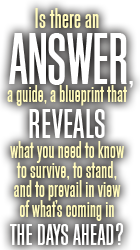
One might think cartoonists, as champions of irreverence and untrammeled free speech, would be unanimously resolute in defending their martyred comrades at the French satirical magazine Charlie Hebdo. Yet Joe Sacco, one of the most popular and outspoken of today's political cartoonists, is actually constructing an argument for self-censorship. What Sacco prescribes is a kind of selective self-censorship, in which cartoonists refrain from insulting Muslims—but are free to target Israelis.
Showered with accolades and awards for his book-length graphic stories about serious historical topics such as World War I, Bosnia and the Arab-Israeli conflict, Sacco has emerged as one of the most influential figures in making the comic art form respectable beyond the confines of comic fandom—and providing educators with an effective new way to teach history.
Thus it was no surprise that Sacco was a much-sought-after commentator on the Charlie Hebdo slaughter. He told the New York Times that he was, of course, "disgusted" by the "really contemptible" killings. "But," he hurried to add, "I also come from a position of trying to understand why people are affected by images, and not just say, 'Why can't you take a joke?' An image of Muhammad in some compromising position isn't meant to be just a joke."
Salman Rushdie, perhaps the world's most famous target of Islamist intolerance, recently referred to these rationalizers as "the 'but' brigade." For Joe Sacco, Charlie Hebdo's satirical portrayals of Islam's founder were not satirical at all. They were not "meant to be just a joke." They were meant to inflict harm. He is suggesting that it was the Charlie Hebdo staffers who started it, and the men who gunned them down were guilty—but with extenuating circumstances.
Sacco elaborated on his point in the way a cartoonist does best—by creating a 10-panel comic strip for the British newspaper The Guardian. Sacco's piece, "On Satire," attempts to discredit critics of the Charlie Hebdo massacre, both among his fellow cartoonists and the wider public. He begins by contrasting the response of other cartoonists to his own. The others are depicted as self-righteous cavemen, obnoxiously beating their chests in affirmation of free speech; he is a sober, thoughtful visitor to the graves of the victims, respectfully doffing his hat.
Sacco then shifts into "Oh yeah? Let's see how you like it" mode. He presents distasteful caricatures of blacks and Jews, accompanied by two sarcastic questions. Next to the black man in a tree with a banana, Sacco asks, "I'm allowed to offend, right?" Next to the hook-nosed Jew counting money, he asks, "If you can take the 'joke' now, would it have been as funny in 1933?"
There are two glaring problems with Sacco's comparison of the Muhammad cartoons to racist cartoons about blacks or Jews. The first is that a cartoon about Muhammad is not ipso facto a racist attack on Muslims or Arabs. It is a satirical poke at a religion. A cartoon satirizing, for example, Moses, is not automatically anti-Semitic. Mocking the tenets of a religious faith is not the same as making negative statements about all members of a particular race or ethnic group.
The second problem is Sacco's superficial understanding of history. Of course, neither blacks nor Jews find it funny when a cartoonist depicts them in a bigoted fashion—but they do not murder the cartoonist. Sacco asks if his grotesque depiction of a Jew "would have been funny in 1933," that is, the year the Nazis rose to power. It certainly would not have been funny. But German Jews did not murder anti-Semitic cartoonists in 1933. Civilized people respond in a civilized way when they are offended. In the free world, the answer to Sacco's sarcastic question, "I'm allowed to offend, right?" is a resounding "yes."
The climactic scene of The Guardian cartoon shows the infamous photograph of the hooded Abu Ghraib detainee with his arms spread, with Sacco commenting, "Perhaps when we tire of holding up our middle finger we can try to think about why the world is the way it is—and what it is about Muslims in this time and place that makes them unable to laugh off a mere image."
But the Abu Ghraib abuses took place 12 years ago. The Paris killers were not yelling about Abu Ghraib. They shouted, "We have avenged the Prophet!" Sacco is literally inventing excuses for the killers.
In the final panel of Sacco's cartoon diatribe, men with axes are chasing two unarmed Muslims, one of them a woman carrying a baby. Sacco sarcastically declares, "If we answer 'Because something is deeply wrong with them'—certainly something was deeply wrong with the killers—then let us drive them from their homes and into the sea, for that is going to be far easier than sorting out how we fit in each other's world."
Those who are familiar with Sacco's graphic novels about the Arab-Israeli conflict will note the irony of that "driving them into the sea" reference in The Guardian. In Sacco's vivid imagination, Westerners are shown driving Muslims into the sea. But in the real world, that phrase is best known in connection with an historical event where it was actually employed: the attempt by five Arab armies, in 1948, to slaughter the Jewish residents of the newborn state of Israel—to perpetrate a Charlie Hebdo massacre, writ large.
Yet Sacco's 2009 magnum opus on the Arab-Israeli conflict, the 388-page Footnotes in Gaza, contains exactly one panel about the 1948 war, and even there Sacco cannot bring himself to acknowledge that the Arabs' intention was to destroy Israel. The centerpiece of the book is an Arab claim that Israeli soldiers massacred 275 Arab civilians in the Gaza city of Khan Younis during the 1956 war. Sacco, who accepts the Arab version hook, line and sinker, says this explains why Arabs hate Israel—the killings in Gaza "planted hatred in their hearts." That's why he skips over the 1948 war. It would disrupt his narrative that the Arab-Israeli conflict essentially began in 1956.
Sacco was unable to locate a single Israeli soldier who witnessed, or even heard about, the alleged massacre. He relies entirely on his interviews with elderly Gazans, who regale him with gory (but often implausible or contradictory) tales. The reader is inundated with so many images of Israelis beating, harassing and generally humiliating defenseless Arabs that it is not hard to believe the Israelis massacred some of them too.
The notion that an anti-Jewish cartoon must include a hooked nose and some dollar bills, as Sacco suggested in his cartoon for The Guardian, is passé. In today's world, the monstrous Israeli mass murderer can serve a similar purpose. Sacco's definition of cartoons that are racist provocations in effect preserves an important exception: slandering the Jewish state is legitimate.
Joe Sacco has sharpened the lines of the post-Paris debate. Do provocative cartoonists share the blame for their own grisly deaths? Should satirists restrain their pens when the offended parties have at their disposal armies of jihadis—or, in the case of North Korea, nuclear missiles? Thanks to Sacco, perhaps this is also the moment to consider whether malicious cartoons of Jews are illegitimate only if the targets are Diaspora Jews.
Dr. Rafael Medoff is a historian who has worked with Marvel Comics and Disney's educational division to create comics and cartoons about historical topics. He is the co-author of the forthcoming book "Cartoonists Against the Holocaust."
To contact us or to submit an article, click here.
Get Charisma's best content delivered right to your inbox! Never miss a big news story again. Click here to subscribe to the Charisma News newsletter.






